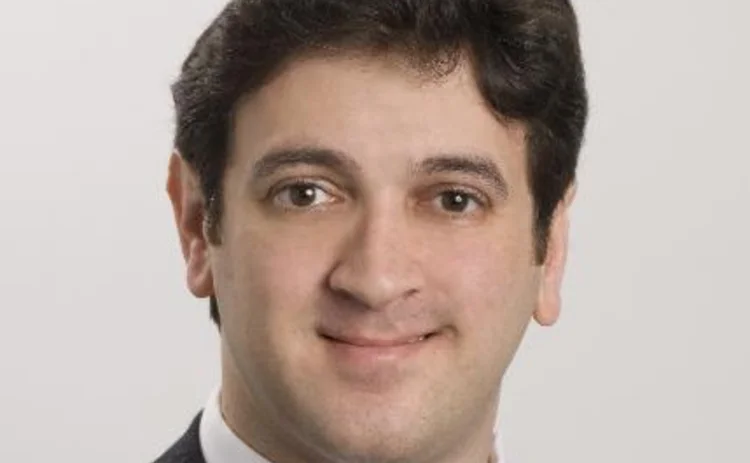Managing LEI Expectations

Even with the setting of legal entity identifier (LEI) standards well underway, and seeming likely to progress at a robust pace in 2012, with the impetus of the G-20's June deadline for LEI specifications, the webcast Inside Reference Data sponsored last month found that a majority of participants think it will take well into the next five years or more to implement the standard.
Evidence to the contrary, however, is visible in other reports on LEI in this issue, such as Nicholas Hamilton's look at how service providers are preparing for LEI implementation, and our Industry Warehouse column, in which representatives of the organizations with large roles in administering the LEI standard describe their preparations.
Might the industry be experiencing what I'll call the "coaster pager effect"? This refers to the devices restaurants use for patrons waiting by the hostess stand. Smarter establishments tend to tell diners their wait may be 20 or 30 minutes, leaving them pleasantly surprised when the device begins flashing and vibrating after only 10 minutes or so. It might be a cheap trick but it spawns goodwill.
Are we hearing from some industry participants or practitioners that LEI implementation will last into 2013, 2014 and likely well beyond that, only to be pleasantly surprised that it's mostly complete by the end of 2012? And dare we say, following the recent holiday season, that could engender some goodwill from firms who see LEI efforts as a burden, if the implementation is done sooner than expected?
Among the positive signs noted in the reports above:
• SIX Telekurs database can already accommodate a 20-digit standard, so creating a new code for the LEI, which is also expected to be 20 digits, will be easier.
• Matthew Bastian, director of market and business development at Cusip Global Services, recommends firms should indeed budget for LEI work this year.
• The business case for LEI is apparent, since the webcast polling also found that respondents perceive high benefits for data quality and reducing risk. In addition, 90 percent of respondents indicated willingness to implement LEI even if it were not required.
• Before 2011 ended, ISO member bodies approved the ISO 17442 LEI draft standard, bringing the industry a step further in setting the characteristics for the LEI.
• Lastly, the Depository Trust & Clearing Corporation (DTCC) is enhancing its legal entity reference data capabilities and Swift is leveraging its capabilities to have thousands of provisional LEIs assigned by mid-year 2012.
These developments aren't just one industry organization or firm making an effort, but point to a broad, if not completely universal effort underway, even as LEI standard-setting authorities still fine tune and reach a conclusion on exact LEI specifications. Some pessimism, as expressed in our webcast polls, may be natural for an industry that has seen standards efforts drag and delay in the past, but the signs are there that LEI could be different.
Only users who have a paid subscription or are part of a corporate subscription are able to print or copy content.
To access these options, along with all other subscription benefits, please contact info@waterstechnology.com or view our subscription options here: https://subscriptions.waterstechnology.com/subscribe
You are currently unable to print this content. Please contact info@waterstechnology.com to find out more.
You are currently unable to copy this content. Please contact info@waterstechnology.com to find out more.
Copyright Infopro Digital Limited. All rights reserved.
As outlined in our terms and conditions, https://www.infopro-digital.com/terms-and-conditions/subscriptions/ (point 2.4), printing is limited to a single copy.
If you would like to purchase additional rights please email info@waterstechnology.com
Copyright Infopro Digital Limited. All rights reserved.
You may share this content using our article tools. As outlined in our terms and conditions, https://www.infopro-digital.com/terms-and-conditions/subscriptions/ (clause 2.4), an Authorised User may only make one copy of the materials for their own personal use. You must also comply with the restrictions in clause 2.5.
If you would like to purchase additional rights please email info@waterstechnology.com
More on Regulation
Despite regulatory thaw in US, major questions remain globally for 2026
From crypto and tokenization to the CAT to consolidated tapes to T+1’s advancement, the regulatory space will be front and center in the New Year.
Will overnight trading in equity markets expand next year? It’s complicated.
The potential for expanded overnight trading in US equity markets sparked debate this year, whether people liked it or not.
Waters Wavelength Ep. 342: LexisNexis Risk Solutions’ Sophie Lagouanelle
This week, Sophie Lagouanelle, chief product officer for financial crime compliance at LNRS, joins the podcast to discuss trends in the space moving into 2026.
Citadel Securities, BlackRock, Nasdaq mull tokenized equities’ impact on regulations
An SEC panel of broker-dealers, market-makers and crypto specialists debated the ramifications of a future with tokenized equities.
FIX Trading Community recommends data practices for European CTs
The industry association has published practices and workflows using FIX messaging standards for the upcoming EU consolidated tapes.
Interview: Linda Middleditch, Regnology
Regnology’s Linda Middleditch discusses its acquisition of Wolters Kluwer’s FRR business
Tokenized assets draw interest, but regulation lags behind
Regulators around the globe are showing increased interest in tokenization, but concretely identifying and implementing guardrails and ground rules for tokenized products has remained slow.
Waters Wavelength Ep. 341: Citi’s Pitts and Topa
This week, Citi’s Michele Pitts and Marcello Topa join Wei-Shen to talk about UK and EU T+1.







